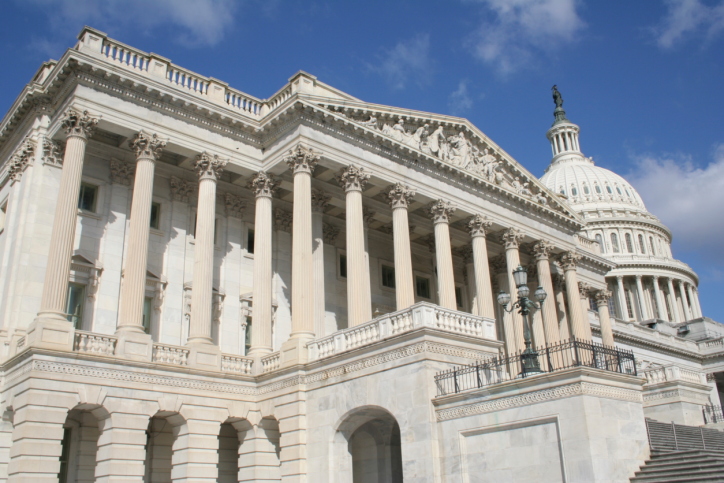
 The Senate wrapped up its work for the summer Aug. 10, approving a $1.2 trillion infrastructure bill that extends pension smoothing relief for single-employer plan sponsors, as well as a $3.5 trillion budget outline that sets the stage for a broader tax and spending bill later this fall.
The Senate wrapped up its work for the summer Aug. 10, approving a $1.2 trillion infrastructure bill that extends pension smoothing relief for single-employer plan sponsors, as well as a $3.5 trillion budget outline that sets the stage for a broader tax and spending bill later this fall.
The pension smoothing provision was included in the Infrastructure Investment and Jobs Act (H.R. 3684, as amended) to help offset the cost of $550 billion in new spending to rebuild the nation’s highways, roads, bridges, railways, transit systems and other infrastructure projects. The Senate approved the bill on a 69-30 vote, including 19 Republicans.
To provide plan sponsors more flexibility in funding their pension obligations, H.R. 3684 would adjust the funding stabilization percentages that were included in the American Rescue Plan (ARPA) that was enacted in March. The infrastructure bill also further extends the stabilization period from 2029 to 2034. The amendments made by H.R. 3684 would apply with respect to plan years beginning after Dec. 31, 2021.
For a table summarizing the minimum and maximum percentages included in the infrastructure legislation, along with the corresponding calendar years, click here.
Digital Asset Reporting
The Senate-approved infrastructure legislation also expands information reporting requirements to include “digital assets,” including cryptocurrency. The legislation defines digital assets as “any digital representation of value which is recorded on a cryptographically secured distributed ledger or any similar technology as specified by the [Treasury] Secretary.”
The definition of “broker” would also be modified to include “any person who (for consideration) is responsible for regularly providing any service effectuating transfers of digital assets on behalf of another person.”
In addition, broker-to-broker reporting requirements would be expanded to make clear that transfers of digital assets are included. The bill also adds digital assets to existing rules requiring businesses to report cash payments of more than $10,000. The changes would be effective for reports to be filed and statements required to be furnished after Dec. 31, 2023.
Senators apparently were working on a bipartisan compromise to address concerns that the application of the reporting requirements would extend beyond brokers, but the compromise amendment was blocked for unrelated reasons.
Employee Retention Tax Credit
Instead of ending at the end of 2021, the ERTC would be terminated three months early, effective for calendar quarters beginning after Sept. 30, 2021. The legislation provides an exception for recovery start-up businesses, which could claim the credit through the end of the year, as under existing law. The American Rescue Plan had extended the ERTC through the end of 2021, but senators cited the low take-up rate among businesses in seeking to end the credit early.
$3.5 Trillion Budget Outline
Meanwhile, the Senate also approved along party lines a non-binding $3.5 trillion fiscal year 2022 budget outline that sets the stage for debate on a yet-to-be-written catch-all infrastructure bill. This would include more of the priorities of the Biden administration and congressional Democrats, such as addressing climate change, providing two free years of community college and expanding paid family and medical leave, among other things.
The budget outline also calls for tax increases directed at corporations and high-income individuals. The tax section of the bill would be drafted by the Senate Finance Committee, where Chairman Sen. Ron Wyden (D-OR) has indicated that he plans to target mega-Roth IRAs and close the carried interest loophole in forthcoming legislation. The House Ways and Means Committee would also be responsible for developing legislation based on the instructions outlined in the budget.
A summary of the budget outline can be found here.
What’s Next?
The infrastructure bill now goes back to the House of Representatives for consideration. However, the House is scheduled to be out of session until Sept. 20, so the earliest the chamber could consider the bill would be toward the end of September, assuming the House doesn’t come back sooner, which has been suggested. House Speaker Nancy Pelosi (D-CA) has indicated that she will not bring up the bipartisan infrastructure bill for a vote unless the Senate first approves the additional $3.5 trillion infrastructure bill. And as with the bipartisan infrastructure legislation, the House will need to approve the Senate’s $3.5 trillion budget outline before the actual legislation can be written. Note that the House could also amend the Senate's infrastructure bill or the budget outline, which would push the legislative timeline to later in the year.
- Log in to post comments
